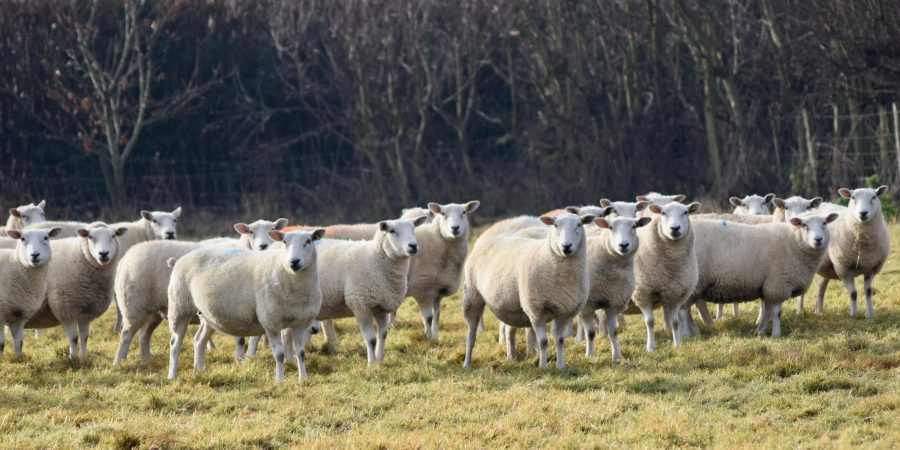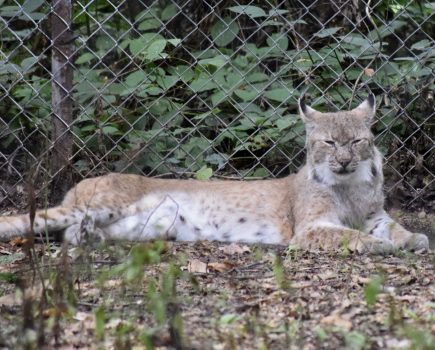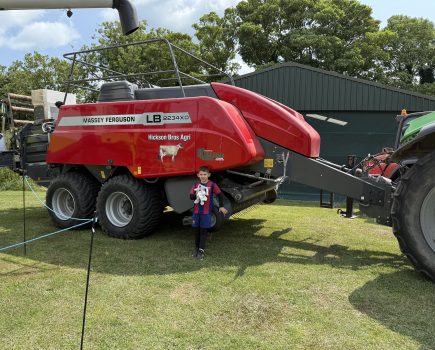What a horrible soggy start to the new year. It doesn’t seem that long ago that we would have been pleased to see a drop of rain; now we look forward to a dry day or two. Fortunately, a couple of weeks in we are now getting a bit of what many would refer to as “proper winter weather”, although I am not convinced that I know quite what that is anymore. A decent cold spell would certainly be useful.
In spite of the weather, the ewes have settled into that relaxed, mid-pregnancy mode and are looking remarkably well; they are also all beginning to swell noticeably as pregnancy advances into the third trimester, when lamb growth really kicks in. For various reasons I’ve forgone scanning this year. It’s nice to know what to expect in terms of numbers and to pull out empties, but being away from home on a bit of new grazing (still on permanent pasture), things were getting a bit too complicated, added to somewhat by the almost uninterrupted rain.
From what I hear, scanning results appear to have been a bit variable this season, particularly for the early lambing flocks, but do seem to have picked up somewhat as we move into the late February/early March lambers, with a number of flocks seeing significant increases, (plus 8 to 10%), on last year’s results, so fingers crossed for decent lambing figures. I am reasonably reassured by the look of the girls (but could be wrong) that I have no empties, although percentage wise I really could do with them staying just where they were last year; a 10% increase at 220% would be rather too much and could generate problems at lambing, and I really do not need any added complications arising from lots of triplets, particularly lambing outside; the key to my system has always been simplicity.
Although the girls do have grass in front of them currently, I do need to give some thought to their feeding regime in the run up to lambing; the relatively warm winter to date has kept things growing and should provide a decent bite of grass for them to come home on to at the beginning of February and they are quite fit, but they do just need a bit of hard feed.
With the price of concentrates, nobody wants to be feeding more than is necessary, but with prolific ewes I do need to feed a bit to ensure good lamb weights, strong lambs and to put milk under the ewes and, particularly, a good supply of colostrum. Although I believe in challenging my sheep, which is, in part, what has lifted flock efficiency, those that have responded well to challenges are those that have stayed with us and have produced the replacements; but the run up to lambing is really not the best time to challenge them.
I truly do find the prospects for the coming year quite difficult to gauge, as, it appears, do a lot of other sheep keepers; what we really need is a degree of consistency and some joined up thinking from DEFRA. The latest review of the Sustainable Farming Incentive and Countryside Stewardship proposals and simplification of applications may help a little and we can hope for some limited improvement in prices.
After ewe numbers fell by almost 2.5% last year, the national flock is at its lowest level since 2012; this, plus an increase in EU exports of some 4% over the same timescale, does offer some chance of a tightening of supply with a commensurate lift, if only a little, in prices. On the down side, input prices are certainly not going to fall significantly, and with consumers being squeezed just as much as the sheep sector, any real increase in price will simply do further damage to an already falling domestic demand; not wishing to be pessimistic, but I suspect it may be a challenging year, although I do hope that I am wrong.
To further add to our woes, Culiciodes midges, in vector mode, seem to be mounting a twin-pronged offensive just to make life a little more interesting for sheep keepers; to the west of the South East region, in Wiltshire and Hampshire in particular, quite a number of early lambing flocks appear to be experiencing considerable increases in lamb mortality due to Schmallenberg. Although these are flocks that would have been tupped in August when midges would have been particularly active, the warm weather persisted well into mid-October, raising the spectre of infections later into the season, so hope for the best, but we do need to be aware of possible complications.
The other prong has arisen in the east, with a potential threat in the shape of Bluetongue. Since the new variant BTV-3 was first identified on 13 November last year, it has been ticking away steadily, with some 45 cases identified on 25 different holdings in east Kent and north Norfolk. Until now (9 January), interestingly, and somewhat oddly, no active cases have, as yet, been reported; all of those picked up so far have been as a result of routine surveillance, so I’m not quite sure what is going on!
Although various measures have been tried in the past, such as garlic licks and citronella, there is little that can be done effectively to keep Culicoides midges at bay; a decent spell of cold weather will help, but things will warm up eventually. Again we just need to hope for the best but be prepared. Both these threats are, however, a timely reminder to us all of the need to be vigilant and to critically review what we do in terms of our flock bio-security. Notices and boot dips are not going to keep midges out, but biosecurity is 90% about attitude and will help with other potential disease issues.







